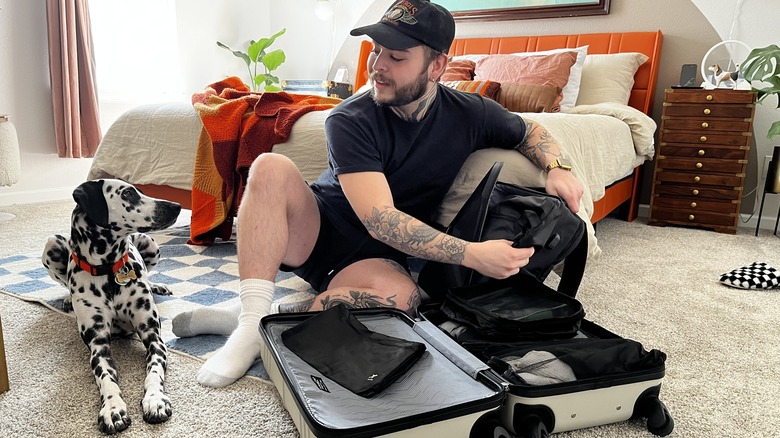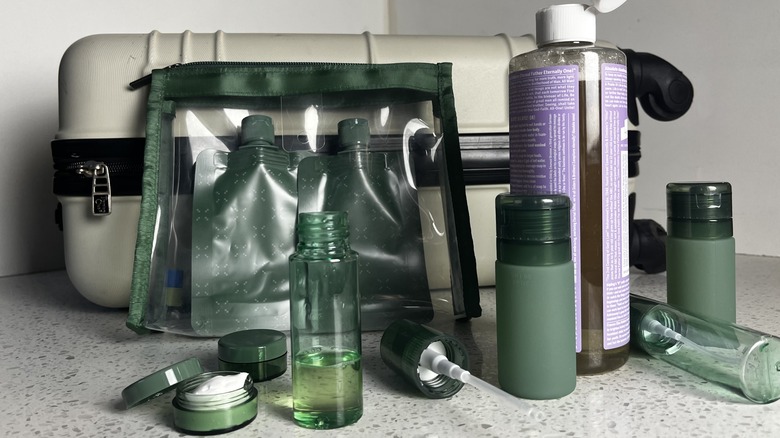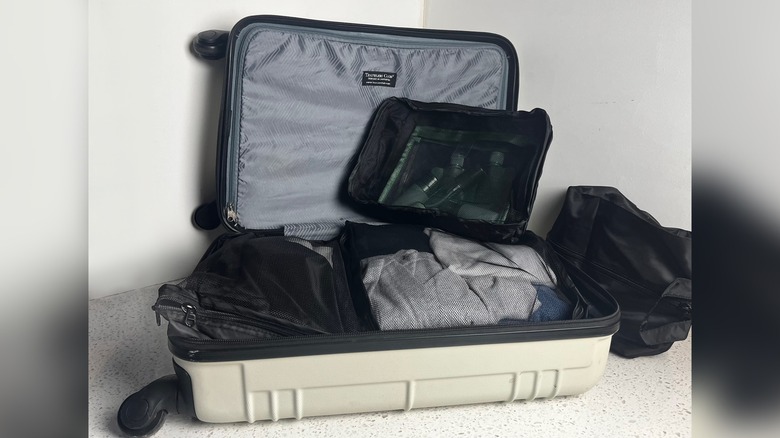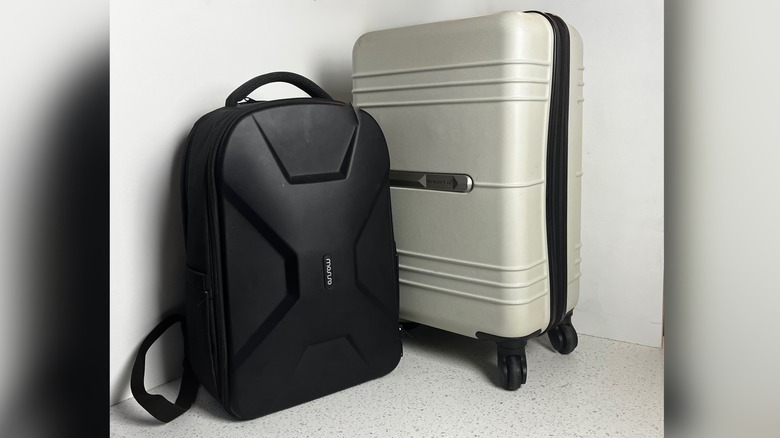We Tried The Top Tips For Successfully Packing Light And This Was Our Favorite
We may receive a commission on purchases made from links.
When it comes to travel, there's one universal challenge we all face — packing efficiently. We've all been annoyed, looking at a messy suitcase stuffed to the brim, wondering why we need so much stuff for a short vacation. Flying or packing for a road trip can be stressful enough without the added frustration of lugging heavy bags to the car or paying an airline for checked luggage. That's why we embarked on a mission to explore the top minimalist packing tips and tricks.
So, today we put these methods to the test. We experimented with minimalist bags and tools to get everything we needed for a weekend flight to Palm Springs to spend this ideal time of year in the nearby Joshua Tree National Park. Not only would this require packing for both a warm, sunny climate and cooler desert nights, but also the appropriate hiking gear for our day at the national park. It might've seemed impossible, but we were determined to make it work and prove there's no reason to pay for a checked bag.
We wanted to discover which packing methods worked, which didn't quite meet the mark, and most importantly, share our experience. So, we dove into the world of packing hacks to find the ultimate solution for stress-free, lightweight packing. After much trial and error, we found a few tips that stood out above the rest.
Getting the right minimalist materials
In our quest for the perfect packing hack, we gathered the materials we needed to put these tips to the test — micro-sized travel toiletries, a packing cube set, and of course, our choices of carry-on luggage. We also picked versatile clothing pieces that could be mixed and matched for different outfits. Based on FAA Requirements, carry-on bags can be no more than 45 linear inches. Most airlines specify these measurements as 22 inches in height, a 14-inch width, and 9 inches deep, so choosing the right-sized bag is crucial. When it came to packing light, our main concern, however, was choosing a lighter bag.
Because of TSA requirements, all liquids must be just over three ounces or less and fit into a quart-sized bag, so bringing along smaller-sized toiletries was already a requirement. However, in search of the lightest containers possible, we invested in thin, reusable silicone pouches and micro bottles for toiletries to avoid extra weight when packing.
We purchased packing cubes online, investing only around $20, and our experiment setup was as casual as it gets. We decided to try this hack out in our cozy living room because, honestly, picking out clothes for the trip created chaos in our bedroom. Let's just say the scene was not quite Instagram-worthy!
Experimenting with luggage sizes & packing methods
Choosing the right bag was the first challenge. The Traveler's Club bag we had used before this experiment was almost exactly 45 linear inches, measuring 22 inches high, 13.5 inches wide, and 8.5 inches deep. Though the bag fit the measuring requirements, it weighed over six pounds before packing. Surely, there must've been a lighter option, right? After much research and careful measuring, we took on the challenge of packing in a lighter, two-pound, hardshell backpack. The dimensions were 17 inches high, 11 inches long, and only 5 inches deep, so it wasn't easy.
After choosing the right bag, we experimented with packing cubes. These were a game-changer! Not only did they help keep our clothes compact, but they also acted as mini drawers in the bag, making it easier to access specific items without rummaging through everything. Travel-sized toiletries are always a breeze to pack, but for a short weekend trip, most bottles hold more than enough product. Open Story has a travel set of reusable bottles, including two thin pouch-style containers, great for shampoo and conditioner, and two micro-containers, perfect for lotion and sunscreen.
The 5-4-3-2-1 method also proved to be helpful. Planning and packing outfits according to this formula made it easier to have versatile options while keeping the number of items in check. It also helped us avoid overpacking, as we stuck to bringing five undergarments and socks, four shirts, three pants or shorts, two pairs of shoes, and one hat.
Our favorite packing hacks (by far!)
After experimenting with various packing hacks, it was clear that there was no one-size-fits-all solution for light packing. Each trick had its pros and cons. However, our favorite hack was using the packing cubes and small, thin travel toiletry bottles. They both allowed us to make the most of the limited space in our lightweight bag and organize it by category for easy access.
While the other hacks had their merits, the key to successful light packing is not just using one particular hack but combining strategies that suit your trip's needs. The 5-4-3-2-1 strategy proved to be more clothing than we needed. So to further create space, we took advantage of an extra hack. We chose one piece of clothing from each outfit to wear to the airport (including our sweaters), and because this trip was all about hiking, we wore our bulkier hiking boots to optimize the space left in our bag.
Before this minimalist experiment, we packed our normal carry-on the way we had always done it (haphazardly and in a hurry) and found our normal packing method resulted in a 27-pound bag. After using our packing cubes and other experimental methods, when it was all said and done, our fully packed bag came in at a surprising 16.5 pounds. That said, with these results, we're not planning on checking a bag anytime soon, if ever again!



